Marcia Sirota's Blog, page 5
May 29, 2023
Three Simple Ways to Support Youth Mental Health
 Photographer: Marcel Strauß | Source: Unsplash
Photographer: Marcel Strauß | Source: UnsplashAs June arrives, young people everywhere are thinking about the end of term. Some will be starting university or college; others are entering the workforce.
Lately, I’ve been having conversations with people in their early twenties. Almost every one of them has mentioned their struggles with depression, anxiety, stress, eating disorders, or addictions.
Youth Mental Health Photographer: Anthony Tran | Source: Unsplash
Photographer: Anthony Tran | Source: UnsplashEven before the pandemic, we were hearing worrisome stories about youth and their mental health. And now, three years later, things have only gotten worse.
We’re living in challenging times. The environment, political polarization, the online world, and social injustice – all are factors in the mental health struggles of young people today.
Young people are feeling lost Photographer: Mishal Ibrahim | Source: Unsplash
Photographer: Mishal Ibrahim | Source: UnsplashYoung people are feeling burdened and overwhelmed. They’re lost, confused, and stressed. They are more pessimistic than ever. It’s heartbreaking to see.
So, what can parents, teachers, and institutions do to help young people of all ages thrive in this increasingly difficult world?
Let them do more on their own Photographer: Jordan Donaldson | @jordi.d | Source: Unsplash
Photographer: Jordan Donaldson | @jordi.d | Source: UnsplashOne suggestion is to give them more opportunities for empowerment.
Let them do more on their own – and from a younger age. Let them figure things out, make mistakes, be frustrated, and even fail. All of these experiences build grit.
When we overprotect and coddle our kids we do them no favours. They need to be more independent and self-motivated in order to feel better about themselves and their lives. They need to see that they can survive disappointment and use it as an opportunity for growth.
Encourage our youth to follow their passion and persevere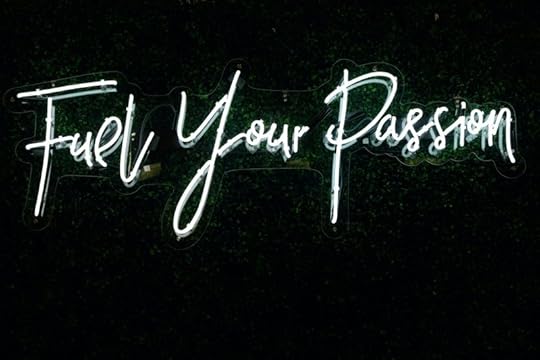 Photographer: Randalyn Hill | Source: Unsplash
Photographer: Randalyn Hill | Source: UnsplashAnother thing we can do is encourage our youth to strive; to follow their passion and persevere – even if their goals seem impossible to achieve. This builds creativity and resilience.
When young people work hard and stick with things, they gain a sense of mastery. This in turn leads to a greater sense of meaning and purpose in life and it can bring them more fulfillment.
Creativity, resilience, meaning, purpose, and fulfillment are all strongly protective factors for psychological well-being.
Encourage our youth to take more emotional risks Photographer: Chang Duong | Source: Unsplash
Photographer: Chang Duong | Source: UnsplashFinally, we should encourage our youth to take more emotional risks – to be open, honest, and vulnerable in their personal relationships and to prioritize in-person interactions over online ones. This builds the capacity for intimacy and could help to significantly relieve stress.
All of these actions are doable and will make a real difference for kids right now and in the future. We need to take the crisis of youth mental health more seriously. It’s our responsibility as the older generation to try and resolve it today.
______
Sign up here for my free bi-weekly wellness newsletter that brings you fresh, thought-provoking content.
Subscribe to my YouTube Channel where you’ll learn simple tips for taking the best care of yourself and your loved ones.
Tune in to my Ruthless Compassion Podcast where I go in-depth about topics like mental health, trauma, and loneliness.
if(window.strchfSettings === undefined) window.strchfSettings = {};window.strchfSettings.stats = {url: "https://marciasirotamd.storychief.io/... "Three Simple Ways to Support Youth Mental Health",id: "84fb0907-fb13-4676-8158-d29510e9b589"};(function(d, s, id) {var js, sjs = d.getElementsByTagName(s)[0];if (d.getElementById(id)) {window.strchf.update(); return;}js = d.createElement(s); js.id = id;js.src = "https://d37oebn0w9ir6a.cloudfront.net... = true;sjs.parentNode.insertBefore(js, sjs);}(document, 'script', 'storychief-jssdk'))
The post Three Simple Ways to Support Youth Mental Health appeared first on Marcia Sirota.
March 30, 2023
No more Band-Aid Approaches to Violence on Our Streets and in the TTC
I’ve been thinking about the state of our city a lot these days. Toronto has always been a very safe place to live. It used to be called, “Toronto the good,” but now, things have changed. Over the past few years, our city has become increasingly dangerous.
There have been more non-gang-related shootings, stabbings, and random incidents of violence in Toronto than ever before. People are being attacked on the street and in the public transit system. Photographer: Chelms Varthoumlien | Source: Unsplash
Photographer: Chelms Varthoumlien | Source: UnsplashJust the other day, a 16-year-old boy, Gabriel Magalhaes, was sitting on a bench at Keele subway station, waiting for a train, when a 22-year-old man came up and stabbed him in an unprovoked attack. The teenager died of his injuries shortly afterward. The assailant was undomiciled and apparently, he had suffered from mental health issues. He also had a criminal record, an active arrest warrant issued in Newfoundland, and he had violated a probation order. According to court documents, the murderer had allegedly pleaded guilty to threatening a group of people in 2020.
The mother of the victim bravely spoke out on the radio shortly after she lost her son. She was heard beseeching our politicians to take action against these kinds of attacks. She wants the government to deal more seriously and more immediately with the mental health crisis in our community. I wholeheartedly agree with her.
 Photographer: Joyful Accidents | Source: Unsplash
Photographer: Joyful Accidents | Source: UnsplashAt the end of January 2023, a CBC producer, Michael Finlay, age 73, was murdered in an unprovoked, random attack by a homeless man presumably suffering from mental health problems.
Mr. Finlay was walking on the Danforth when his attacker, who was wearing a red fire mask, pushed him to the ground. Mr. Finlay died a week later of his injuries. According to locals, the attacker was a threatening presence in the community, often shouting curses at others. He had a long criminal history and was out on bail when Mr. Finlay was attacked.
Torontonians’ Deteriorating Mental Health Photographer: Joydeep Pal | Source: Unsplash
Photographer: Joydeep Pal | Source: UnsplashThe mental health of Torontonians and other Canadians had begun deteriorating even before the pandemic began. The stressors of modern life were creating major problems for vulnerable individuals. And, after three years of increasing hardships, loneliness, isolation, and financial stress brought about by the pandemic, we are now in a mental health crisis of epic proportions.
Even before the pandemic began, colleges and universities were reaching out to community psychotherapists, asking them to come and help counsel their students who were suffering from serious mental health issues. And now, three years into the pandemic, it’s gotten even worse.
Substance misuse is at an all-time high with deaths from overdoses increasing yearly and the suicide rate among young people appears to be climbing. One of the most significant issues we’re facing is a lack of professionals who could provide care to people who are suffering from mental health and addiction issues.
The Accessibility to Mental Health Services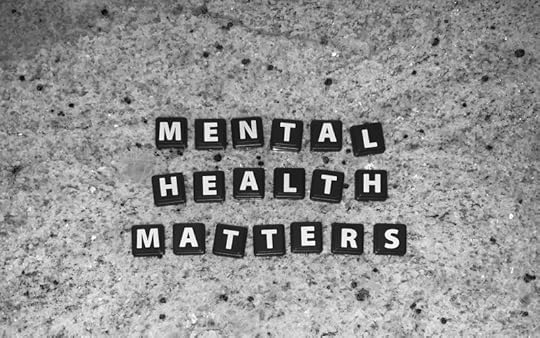 Photographer: Marcel Strauß | Source: Unsplash
Photographer: Marcel Strauß | Source: UnsplashThe waiting time to see a psychiatrist can be anywhere from 1 month to up to 2 years in some parts of Canada. The waiting time to see a child psychologist can be just as long. People who need help often simply cannot find it. Over six million Canadians don’t even have a family doctor right now, with a third of them having been looking for more than a year. With no primary care provider, there’s no source of treatment or referral for mental health or addiction problems.
The recent violent incidents on public transit and the streets of Toronto are unprecedented, shocking, and horrifying, but they’re not surprising, given the state of our mental health in the city. Sadly, these incidents are not going to stop if we continue to ignore the root causes.
The Root Causes Photographer: Ashwini Chaudhary(Monty) | Source: Unsplash
Photographer: Ashwini Chaudhary(Monty) | Source: UnsplashWe need to address the growing problems of homelessness, substance misuse, unemployment, and a lack of available mental health care. We need to start dealing with the challenges facing our community today or these incidents of random, unprovoked violence will become commonplace.
The federal budget just came out this week and unsurprisingly, there was no money available for the city of Toronto. The feds suggested that the provincial government should be the one to help out, but Queen’s Park appears equally reluctant to bail us out. It seems like everyone is passing the buck.
Toronto is facing a huge budget deficit. It appears that we won’t even be able to afford to maintain our basic infrastructure. With these kinds of financial constraints, it worries me how we are to deal with the mental health crisis we are now facing.
On CBC radio this morning, they were speaking about the need for Toronto to generate income in new ways because the old ways are no longer bringing in enough revenue to support the life of the city. This has to be okayed by the other levels of government in order for it to be enacted and I hope that whoever becomes the new mayor can be creative and persuasive in making it happen.
Band-Aid Solutions are Ineffective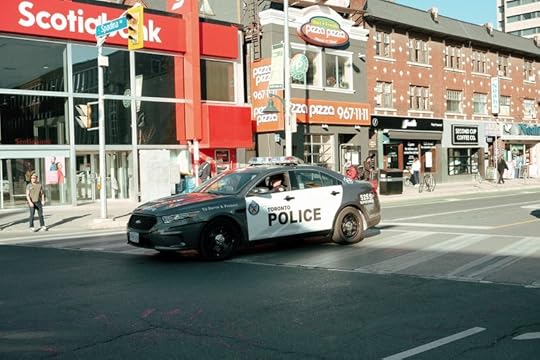 Photographer: Niamat Ullah | Source: Unsplash
Photographer: Niamat Ullah | Source: UnsplashOur former mayor, John Tory, was not a visionary by any means. He brought in more police to the TTC in the hopes of deterring violent attacks, but there is no way that we could possibly post enough police officers to prevent every potential violent incident. More policing is not the answer. This type of solution is dealing with the symptom and not the causes of these incidents.
Adding more police is a band-aid solution and as a doctor, I was always taught that you treat the cause, not the symptom, if you want to effect a real and lasting cure for any ailment.
We must prioritize mental health immediately. If we don’t, I envision parents no longer allowing their children to ride on public transportation. Ridership is already down and if we don’t want our TTC system to collapse, we need to make it safer for everyone.
If we don’t prioritize community mental health, I envision that people will become afraid to walk along the streets. Our city could become a ghost town in which only people in vehicles and the undomiciled will be visible outdoors.
Do we want our citizens to live in fear? Of course not. But if we want things to change, we need action and we need it now.I implore every citizen to lobby their council members, as well as their provincial and federal politicians to improve mental health services and access to care. We need our governments to recognize how serious this crisis is and to start finding solutions. We cannot have more teenagers dying as they’re waiting for the subway. We cannot have more senior citizens dying as they’re walking down the street.
______
Sign up here for my free bi-weekly wellness newsletter that brings you fresh, thought-provoking content.
Subscribe to my YouTube Channel where you’ll learn simple tips for taking the best care of yourself and your loved ones.
Tune in to my Ruthless Compassion Podcast where I go in-depth about topics like mental health, trauma, and loneliness.
if(window.strchfSettings === undefined) window.strchfSettings = {};window.strchfSettings.stats = {url: "https://marciasirotamd.storychief.io/... "No more Band-Aid Approaches to Violence on Our Streets and in the TTC",id: "84fb0907-fb13-4676-8158-d29510e9b589"};(function(d, s, id) {var js, sjs = d.getElementsByTagName(s)[0];if (d.getElementById(id)) {window.strchf.update(); return;}js = d.createElement(s); js.id = id;js.src = "https://d37oebn0w9ir6a.cloudfront.net... = true;sjs.parentNode.insertBefore(js, sjs);}(document, 'script', 'storychief-jssdk'))
The post No more Band-Aid Approaches to Violence on Our Streets and in the TTC appeared first on Marcia Sirota.
March 17, 2023
Murder by car. The alarming new trend in Canada?
 Photographer: why kei | Source: Unsplash
Photographer: why kei | Source: UnsplashI know of at least four instances of drivers running down pedestrians in Canada over the past five years. And the last two were just in the past couple of months.
There was the most recent incident in which a driver ploughed into a crowd of walkers in Amqui, Quebec, on Monday March 13, killing at least two people (two are still in critical condition in hospital).
There was the February 8 incident of a bus driver in Laval, Quebec, crashing into a daycare, tragically killing two children and injuring six others.
There was a horrific incident in London, Ontario in June of 2021 when a 20-year-old man ran down a Muslim family out for an evening stroll. This was clearly a hate crime but significantly, it was enacted by way of a vehicle.
It’s shocking to think that some disturbed individuals in our country are turning to their vehicles as a means of mass murder.
Canada has always been a peaceful, safe place to live but now these terrible crimes are causing pedestrians across the country to think twice about going out for a simple walk. Photographer: Jason Ng | Source: Unsplash
Photographer: Jason Ng | Source: UnsplashI’m a walker. I go out for an hour most days. The thought of some random driver deliberately trying to run their car into me or my fellow pedestrians is chilling.
I suspect that the one thing these four perpetrators all have in common is that they are suffering from some form of mental disorder.
The Laval driver jumped out of his vehicle right after the crash and started tearing off his clothes. He was described by witnesses as “acting erratically.”
The Toronto driver was affiliated with a group described as a hate group by the Southern Poverty Law Centre.
Over the past several years, the mental health of Canadians has been in crisis and the pandemic has only intensified the problem. Photographer: Rosie Sun | Source: Unsplash
Photographer: Rosie Sun | Source: UnsplashAlthough the average person would never think of using their vehicle as an instrument of murder, it seems to have become one in the eyes of certain individuals – possibly those suffering from a mental health condition.
Having said that, I want to be clear in stating that as a psychiatrist, I’m well aware that the vast majority of people who suffer from mental health problems are not in any way violent or murderous.
But for those disturbed individuals who have violent tendencies, it’s imperative that they receive mental health care in order to avoid further incidents of violence by vehicle.
These crimes are deeply traumatic to the loved ones of the victims and to the entire community where they take place. This is the case of the impaired mental health of one individual – the perpetrator – having a negative impact on the mental health of other individuals – the victims.
The aftermath of each of these events included offering mental health services to the friends, family members, and co-workers of those killed or injured as well as to members of the community who were adversely affected by the crime.
The nature of trauma is that we can be emotionally wounded by experiencing violence, by witnessing it, and by having someone close to us becoming a victim of it. For that reason, it’s not only are those who have been injured in these incidents who end up suffering long-term mental health consequences but it’s also the people who were around to watch the events unfold and the people whose loved ones, colleagues or community members were hurt or killed.
If we don’t want more of such terrible tragedies, we need to invest more in prevention. Photographer: Total Shape | Source: Unsplash
Photographer: Total Shape | Source: UnsplashThe mental health aspects of these crimes cannot, therefore, be underestimated. If we don’t want more of such terrible tragedies, we need to invest more in prevention. We need to have more mental health services available to people before these incidents take place so that we don’t need to mobilize these services in the aftermath.
______
Sign up here for my free bi-weekly wellness newsletter that brings you fresh, thought-provoking content.
Subscribe to my YouTube Channel where you’ll learn simple tips for taking the best care of yourself and your loved ones.
Tune in to my Ruthless Compassion Podcast where I go in-depth about topics like mental health, trauma, and loneliness.
if(window.strchfSettings === undefined) window.strchfSettings = {};window.strchfSettings.stats = {url: "https://marciasirotamd.storychief.io/... "Murder by car. The alarming new trend in Canada?",id: "84fb0907-fb13-4676-8158-d29510e9b589"};(function(d, s, id) {var js, sjs = d.getElementsByTagName(s)[0];if (d.getElementById(id)) {window.strchf.update(); return;}js = d.createElement(s); js.id = id;js.src = "https://d37oebn0w9ir6a.cloudfront.net... = true;sjs.parentNode.insertBefore(js, sjs);}(document, 'script', 'storychief-jssdk'))
The post Murder by car. The alarming new trend in Canada? appeared first on Marcia Sirota.
March 7, 2023
International Women’s Day Includes All Women
It’s International Women’s Day again and it arrives at the same time as the US Conservative PAC is organizing to remove rights for transgender people.
 Photographer: Ehimetalor Akhere Unuabona | Source: Unsplash
Photographer: Ehimetalor Akhere Unuabona | Source: UnsplashAlthough there are those today who refuse to recognize these rights, they are no less valid and necessary and they need more than ever to be supported.
The conservative lawmakers and politicians warn us that trans women are dangerous – they’re “men in dresses whose intention is to assault cisgender women.”
It’s the same argument they’ve used against LGBTQ+ people in general. In this case, they tell us that “gays can’t be school teachers because they will molest our children.”
But this is a tired old argument that has never been true. The conservative politicians trot it out whenever they want to deprive a group of people of their rights and freedoms.
The lawmakers don’t even believe what they’re saying. And they don’t actually care about women or children being assaulted.
Otherwise, they would be doing something about the rampant sexual abuse of women in workplaces and on college campuses. They would be doing something about all the thousands of children who are still being abused by Catholic priests.
But nobody is talking about disenfranchising cisgender men – the main perpetrators of sexual violence in our workplaces and educational institutions.And only a tiny handful of Catholic priests have ever faced consequences for their actions.
I’m disappointed but not surprised at the direction of the US conservatives. But we need to understand that their argument is a distraction.
They want to take away the rights of other communities because they want all the power and privileges for themselves.
As a feminist and an ally I am compelled to speak out for the LGBTQ+ community and encourage everyone to do so as well.Recently, I’ve been reading a lot of fiction and I just finished two excellent books that helped me to better understand and appreciate a bit more about the journey of trans people. The books are: This Is How it Always Is, by Laurie Frankel and Mad Honey, by Jodi Picoult and Jennifer Finney Boylan.
One thing I love about novels is that they enable us to gain knowledge and empathy about different types of people.
Reading these two novels has certainly helped to deepen my empathy and understanding toward the trans community and it has emphasized two points for me.
One, is that sexual identity has nothing to do with what’s in our pants; and two, is that trans people pose no threat to anyone. In fact, they are far more likely to be victimized than almost anyone else in our society. Photographer: Norbu GYACHUNG | Source: Unsplash
Photographer: Norbu GYACHUNG | Source: UnsplashWhat haters fail to realize is that trans women identify as women. They are not so-called “wolves in sheep’s clothing,” waiting to prey upon unsuspecting females in our public toilets or other female spaces. That argument is old, tired, and absurd.
Whenever we hate a group this much, it always comes down to feeling threatened. Either the people in power are resistant to sharing their rights and privileges with others or they’re afraid that maybe these “others” aren’t so different from themselves.
After all, everyone is, within themselves, a little bit male and a little bit female. And that really scares some of us.
The psychiatrist Carl Jung wrote about the anima and the animus – the female and male aspects of each human being. No-one is one hundred percent male or one hundred percent female. Not in how they feel and not in how they go through life.
In fact, our binary view of gender is less a matter of science than a social construct. Photographer: tao he | Source: Unsplash
Photographer: tao he | Source: UnsplashThere are many different expressions of gender in biology, both animal and human. There are naturally trans animals. There have been trans people for centuries. This is simply fact.
There are women with male (XY) chromosomes who have a condition in which their cells can only use female hormones. They look, feel, and identify as women even though their chromosomes are biologically male.
There are children born with ambiguous genitalia – in which it’s unclear at birth what gender to assign them. Most of them are butchered shortly after birth by doctors who make arbitrary decisions of assignment rather than waiting and allowing them to decide for themselves as adults.
There are true hermaphrodites. There are people born with only one X chromosome and those who have XXY chromosomes. And there are people assigned one gender at birth who identify with a different gender.
Trying to eliminate trans-ness doesn’t make it any less real or less valid. It doesn’t negate the lived experience of all the trans people throughout history.
Rather than trying to hoard all the power and privileges, why not try and share? Everyone will benefit.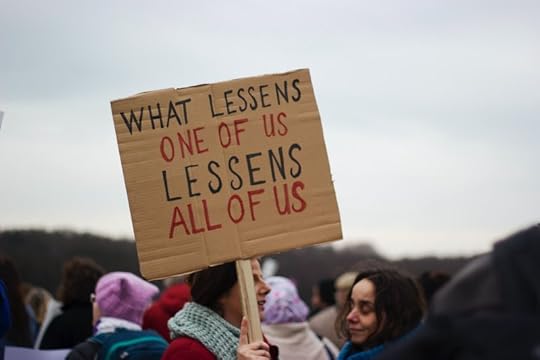 Photographer: micheile henderson | Source: Unsplash
Photographer: micheile henderson | Source: UnsplashRather than being afraid of what we don’t understand, why not try to understand each other better?
We can build more empathy and everybody can peacefully coexist.
As the singer, Lizzo says, “If you feel like a girl, then you’re real like a girl.” That’s as clear and simple as it gets.
If someone identifies as a woman, they’re a woman. Trans women are women. It doesn’t matter what gender they were assigned at birth. It doesn’t matter what chromosomes they have or what’s in their pants. They’re women.
This International Women’s Day, let’s stand up, especially for trans women, and give them the love and support they deserve, now and moving forward.
______
Sign up here for my free bi-weekly wellness newsletter that brings you fresh, thought-provoking content.
Subscribe to my YouTube Channel where you’ll learn simple tips for taking the best care of yourself and your loved ones.
Tune in to my Ruthless Compassion Podcast where I go in-depth about topics like mental health, trauma, and loneliness.
if(window.strchfSettings === undefined) window.strchfSettings = {};window.strchfSettings.stats = {url: "https://marciasirotamd.storychief.io/... "International Women’s Day Includes All Women",id: "84fb0907-fb13-4676-8158-d29510e9b589"};(function(d, s, id) {var js, sjs = d.getElementsByTagName(s)[0];if (d.getElementById(id)) {window.strchf.update(); return;}js = d.createElement(s); js.id = id;js.src = "https://d37oebn0w9ir6a.cloudfront.net... = true;sjs.parentNode.insertBefore(js, sjs);}(document, 'script', 'storychief-jssdk'))
The post International Women’s Day Includes All Women appeared first on Marcia Sirota.
The Three Dysfunctional Ways of Dealing with Anger
The topic of anger comes up fairly often in my psychiatry practice. Recently, I saw the movie, Turning Red, and I started thinking about the different ways that people deal with their anger.
I’ve noticed over the years that there are three different dysfunctional ways that people manage their anger.
1. Repression. The person will keep shoving it down because they’re afraid of what would happen if they were to express it directly. Photographer: Adrian Swancar | Source: Unsplash
Photographer: Adrian Swancar | Source: UnsplashThey’re afraid of being criticized or rejected if they were to express their anger clearly and directly so they don’t. Ever.
Unfortunately, repressing anger usually leads to maddening passive-aggressive behaviour or inadvertent, shocking explosions of rage.
Paradoxically, the social consequences of these behaviours are far worse than what would have happened if they had just shared their honest feelings in the first place.
Repression is also dangerous because it can lead to addiction. People will use cigarettes, alcohol, drugs, food, gambling, or other compulsive behaviours in an attempt to neutralize this frightening emotion.
Then they have two problems: what to do with all the rage bubbling up inside them and how to cope with all the consequences of their addictions.
2: Being on a “high boil” and frequently boiling over into angry outbursts. This is not only socially unacceptable but potentially dangerous to yourself and others. Photographer: Icons8 Team | Source: Unsplash
Photographer: Icons8 Team | Source: UnsplashPeople tend to be uncomfortable around “rageaholics” and they prefer to avoid such individuals.
And if your rage is really that hot, you’re likely to get into legal trouble as well.
3: Being on a constant “low boil.” You walk around simmering and seething with resentment and you make yourself and those around you feel miserable. Photographer: Annie Spratt | Source: Unsplash
Photographer: Annie Spratt | Source: UnsplashEveryone can feel the toxic anger seeping through your pores and it’s extremely off-putting. It’s a good way to lose friends and attract unsavoury characters.
So you don’t want to get caught up in any of these three ways of managing your anger.
The best way to deal with anger is to fully acknowledge it, and then decide whether, when, and how to express it. Photographer: LinkedIn Sales Solutions | Source: Unsplash
Photographer: LinkedIn Sales Solutions | Source: UnsplashYou might want to politely and respectfully tell the other person what they did to upset you and then wait and see how they respond.
If they’re open to the feedback and reasonable in their reactions, then the two of you can work things out.
If they become defensive or try to gaslight or intimidate you, they’ve just shown you that they’re unwilling to take responsibility for their actions. At that point, it’s probably best just to walk away.
Sometimes, it’s not safe to express your anger directly; for example, with an abuser or with someone who has a lot more power than you do. Sometimes – such as with a toxic colleague – it’s not strategic.
In these cases, you can journal; write the person a letter that will never be sent, or you can do some type of artwork to vent your emotions.
 Photographer: Scott Graham | Source: Unsplash
Photographer: Scott Graham | Source: UnsplashYou should never confront someone if you suspect that it might not be safe for you to do so.
And you should never express your anger if it’s going to get you in trouble or compromise your career.
Sometimes, vigorous physical activity is helpful in blowing off steam. Sometimes, deep breathing can help.
Most importantly, you don’t want to walk around with a lot of anger. It’s not good for your health – both physically and mentally.
Interestingly, it can be a challenge to identify the source of some anger. Sometimes, the thing you think is making you angry is not actually the issue.
Sometimes, you’re triggered into reacting to a past event. Sometimes, you’re angry about something that feels “safer” to be mad about, as opposed to the thing that’s really pissing you off.
It’s important to tune into your feelings so that you’re clear about what your anger is in fact, directed toward. Otherwise, people will be confused about what’s going on and how to respond to you.
Anger is often a scary emotion – especially if your early experiences of it were negative. But really, it’s just a signal that something bad is happening. Photographer: Alexas_Fotos | Source: Unsplash
Photographer: Alexas_Fotos | Source: UnsplashIt could indicate that you’re being hurt; that a loved one is being hurt, or that an injustice is occurring in the world.
If you see anger as a signal, then you can use it appropriately to guide your actions in terms of your self-care, your relationships, and how you live your life.
Anger itself isn’t a bad thing; it’s got a bad rap because of what some people do when they’re angry.
If you can see it like an energy that arises and flows through you and out of you, then you can make the best use of it with minimal negative consequences.
______
Sign up here for my free bi-weekly wellness newsletter that brings you fresh, thought-provoking content.
Subscribe to my YouTube Channel where you’ll learn simple tips for taking the best care of yourself and your loved ones.
Tune in to my Ruthless Compassion Podcast where I go in-depth about topics like mental health, trauma, and loneliness.
if(window.strchfSettings === undefined) window.strchfSettings = {};window.strchfSettings.stats = {url: "https://marciasirotamd.storychief.io/... "The Three Dysfunctional Ways of Dealing with Anger",id: "84fb0907-fb13-4676-8158-d29510e9b589"};(function(d, s, id) {var js, sjs = d.getElementsByTagName(s)[0];if (d.getElementById(id)) {window.strchf.update(); return;}js = d.createElement(s); js.id = id;js.src = "https://d37oebn0w9ir6a.cloudfront.net... = true;sjs.parentNode.insertBefore(js, sjs);}(document, 'script', 'storychief-jssdk'))
The post The Three Dysfunctional Ways of Dealing with Anger appeared first on Marcia Sirota.
February 22, 2023
How to respond to unreasonable remarks
Lately, I’ve been exploring how we can respond to comments and questions that seem unreasonable, distasteful or that appear to be based on false assumptions.
People tend to tell us things or ask questions based on their own experiences and biases. These remarks might seem perfectly reasonable and benign to them but they can be upsetting to those of us on the receiving end.
Going to the Meta-level Photographer: Jarritos Mexican Soda | Source: Unsplash
Photographer: Jarritos Mexican Soda | Source: UnsplashMy approach to dealing with these types of remarks is to avoid defending, justifying, or explaining ourselves and instead, go to the meta-level.
What does this mean? The word, “meta” means “above,” so going to the meta-level means talking about the comments as opposed to responding directly to them.
For example, if you’re having a discussion with someone about the way you’re dealing with your toxic family of origin and they make an unwanted comment based on their own assumptions about how all families are “supposed” to function, you don’t have to try and defend your position.
Ask them questions and listen to their explanations Photographer: Tachina Lee | Source: Unsplash
Photographer: Tachina Lee | Source: UnsplashYou can, instead, ask them a question like, “what makes you see it this way?” Or, “how did you come to that idea?”
Then, it’s up to them to explain their assumption/belief as opposed to you needing to justify your choices.
When you go to the meta-level, you avoid agreeing with something that you’re fundamentally opposed to. You also avoid getting into an argument with the other person over your differences of opinion.
This way of operating also helps to build understanding between the two of you because if you ask your question politely and not aggressively, it gives the other person a chance to reconsider their assumptions/beliefs and perhaps clarify them to themselves (and to you) why they see things this way.
You also get to clarify your own position Photographer: Bewakoof.com Official | Source: Unsplash
Photographer: Bewakoof.com Official | Source: UnsplashAnd you also get a chance to talk about how you arrived at your thoughts on the matter so that they can see where you’re coming from.
You may agree to disagree on a given subject but this type of discourse will help you both to appreciate that everyone is entitled to their own ideas and opinions.
An ideal way to handle unreasonable or offensive remarks Photographer: Ashkan Forouzani | Source: Unsplash
Photographer: Ashkan Forouzani | Source: UnsplashGoing to the meta-level avoids conflict, builds understanding, and prevents us from going along with things that we disagree with, just to keep the peace.
In my opinion, it’s an ideal way to handle remarks that we might find challenging, incorrect, unreasonable, or even offensive.
______
Sign up here for my free bi-weekly wellness newsletter that brings you fresh, thought-provoking content.
Subscribe to my YouTube Channel where you’ll learn simple tips for taking the best care of yourself and your loved ones.
Tune in to my Ruthless Compassion Podcast where I go in-depth about topics like mental health, trauma, and loneliness.
if(window.strchfSettings === undefined) window.strchfSettings = {};window.strchfSettings.stats = {url: "https://marciasirotamd.storychief.io/... "How to respond to unreasonable remarks",id: "84fb0907-fb13-4676-8158-d29510e9b589"};(function(d, s, id) {var js, sjs = d.getElementsByTagName(s)[0];if (d.getElementById(id)) {window.strchf.update(); return;}js = d.createElement(s); js.id = id;js.src = "https://d37oebn0w9ir6a.cloudfront.net... = true;sjs.parentNode.insertBefore(js, sjs);}(document, 'script', 'storychief-jssdk'))
The post How to respond to unreasonable remarks appeared first on Marcia Sirota.
February 7, 2023
Love Bombing: Is it romantic or something darker?
When we think about romance it’s easy to become confused about what’s a sign of a potentially positive relationship and what’s a bad one.
 Photographer: Kelly Sikkema | Source: UnsplashThere is a lot of misinformation about love going around these days and we heed it at our own peril.
Photographer: Kelly Sikkema | Source: UnsplashThere is a lot of misinformation about love going around these days and we heed it at our own peril.Romantic movies and TV shows often misrepresent how relationships should proceed, presenting super-dysfunctional behaviour as acceptable and even desirable.
One such behaviour is love-bombing. Like the name suggests, it’s an overly-intense way of courting someone that is always driven by unhealthy motives.
These extreme displays of affection might seem ultra-romantic, especially in the light of all the shows playing on TV and in theatres these days but in fact, they’re red flags, warning you that you’re entering into dangerous territory.
Beware the red flags Photographer: Scott Broome | Source: Unsplash
Photographer: Scott Broome | Source: UnsplashSomeone who is overly intense, wanting to spend every minute with you and showering you with gifts, compliments and attention right from the outset is not the ideal romantic partner – they’re a potential abuser.
Love bombing is not a sign of love; it’s a sign of manipulation. The other person is pulling out all the stops to charm you and seduce you so that you’ll agree to their terms – which ultimately will turn out to be 100% in their favour.
Once they’ve hooked you, they’ll become more overtly controlling, aggressive, crazy-making and undermining. They’ll guilt-trip you, making you feel like you owe them for “all the wonderful things” they’ve done for you.
Beware the guilt trips Photographer: Everton Vila | Source: Unsplash
Photographer: Everton Vila | Source: UnsplashNormal, healthy relationships never involve control, manipulation, gaslighting or expectations of tit-for-tat.
Normal, healthy relationships evolve gradually over time. They start out light and easy and they slowly grow in depth and meaning as you get to know each other organically.
Anyone who is pushing you to go faster, deeper is not demonstrating their undying love for you. They’re showing you their true colours.
This is a sign that they want something from you and that they’re putting on a big show in order to get it. How you feel and what you need aren’t important.
Your needs and feelings matter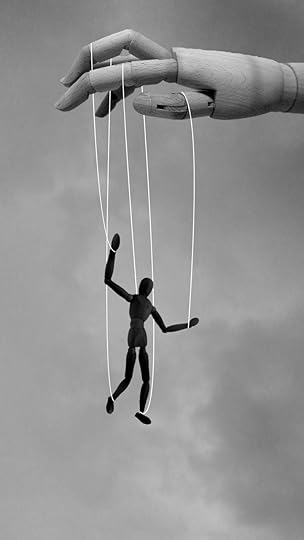 Photographer: Sivani Bandaru | Source: Unsplash
Photographer: Sivani Bandaru | Source: UnsplashWhen someone love-bombs you, it’s actually a boundary violation. The other person is not being sensitive to your natural need to take your time in getting to know them and in building trust with them.
Even though on the surface, they seem to adore you, the truth is that they are only thinking about what they want.
When someone goes too fast, too hard into a relationship it has nothing to do with love. The other person doesn’t know you. They haven’t had the time to learn any of the important things about you that would make you lovable to them.
The love bomber is trying to control you, right from the start of the relationship. And they won’t stop trying to control you. And tragically, when you push back, that’s when you’ll see just how nasty they can be.
Narcissists are the people who engage in love bombing, and they are not okay with their needs being thwarted. They will find ways to punish you for refusing to give them what they want.
The heightened romance of love-bombing can quickly transform into a nightmare scenario when the narcissistic partner feels enraged at your refusal to “cooperate.”
Beware of narcissistic rage Photographer: Becca Tapert | Source: Unsplash
Photographer: Becca Tapert | Source: UnsplashAs Valentines Day approaches, you should seriously consider the dark side of love bombing.
If a potential new partner comes along and tries to shower you with too much affection, too intensely and too quickly, and if you feel like you’re being swept off your feet, recognize this for what it really is and get yourself away from this person as fast as you can
______
Sign up here for my free bi-weekly wellness newsletter that brings you fresh, thought-provoking content.
Subscribe to my YouTube Channel where you’ll learn simple tips for taking the best care of yourself and your loved ones.
Tune in to my Ruthless Compassion Podcast where I go in-depth about topics like mental health, trauma, and loneliness.
if(window.strchfSettings === undefined) window.strchfSettings = {};window.strchfSettings.stats = {url: "https://marciasirotamd.storychief.io/... "Love Bombing: Is it romantic or something darker?",id: "84fb0907-fb13-4676-8158-d29510e9b589"};(function(d, s, id) {var js, sjs = d.getElementsByTagName(s)[0];if (d.getElementById(id)) {window.strchf.update(); return;}js = d.createElement(s); js.id = id;js.src = "https://d37oebn0w9ir6a.cloudfront.net... = true;sjs.parentNode.insertBefore(js, sjs);}(document, 'script', 'storychief-jssdk'))
The post Love Bombing: Is it romantic or something darker? appeared first on Marcia Sirota.
January 26, 2023
Hate is a Virus — The GenZ Corner
Seven years ago, I moved to Toronto from Hong Kong to attend high school. Over time, I have become more comfortable in this city. Still, at times I feel insecure and unsafe, due to the increased number of violent incidents in Canada over the past few years. Last week, my father (who lives in Hong Kong) sent me an article about an Asian student who was killed on a bus by a woman in Indiana who, after her arrest, stated that, “now there will be one less person who will blow up our country.”
 Photographer: Conor Samuel | Source: Unsplash
Photographer: Conor Samuel | Source: UnsplashEven before I left home for Toronto, my family and friends have been expressing their worries about me, with regard to anti-Asian racism outside of Asia. These people suggested that as a minority individual, I should stay quiet and be meek in public in order to avoid any potential conflict.
But racism doesn’t work that way, and even though I tend to be more introverted and those above traits come naturally to me, people will still form their own distorted opinions about me, regardless of my behaviour.
Prior to COVID-19, I had never encountered any overt form of racism. Canadians are known for their politeness and overall cultural awareness when compared to other countries in the West. In 2019, during the pro-democracy movement in Hong Kong, I felt supported while attending demonstrations and doing leafletting on the streets of Toronto as many passersby showed solidarity and genuine concern for my place of birth and its people.
 Photographer: Manson Yim | Source: Unsplash
Photographer: Manson Yim | Source: UnsplashFollowing the COVID outbreak in Canada, people started to blame everything on the Chinese, mainly because the first outbreak happened in Wuhan, China. Suddenly, overt acts of discrimination against Asians (including Koreans, Japanese, Singaporeans, Taiwanese, Hongkongers, Malaysians, etc.) overseas increased drastically.
Uber rides that I had ordered were canceled right after the driver saw my face. I started noticing that I was getting weird stares on public transportation. People moved away from me in the grocery store check-out line. These things were happening so often that I started to feel numb about them.
My Asian friends living in the UK and the U.S. were sharing similar experiences with me. While fortunate that we had not been subjected to physical violence, these incidents caused us to have feelings of powerlessness over how we were viewed and treated by non-Asian people.
 Photographer: Jed Dela Cruz | Source: Unsplash
Photographer: Jed Dela Cruz | Source: UnsplashI was taking deep breaths as I rode the escalator down to the platform. I was minding my own business when I heard the woman’s voice behind me again. "Go away, you virus spreader!"
I tried to ignore her and I got on the train. I sat down as far away as I could from the couple. I was about to cry, feeling choked up with anger and loneliness. Intellectually, I understood where the hostility came from. Emotionally though, I couldn't help feeling upset. I held in my tears until I got to school and released them when I arrived at the washroom.
I thought about racism during that subway ride. I realized that it isn't about me but it reflects deeply-entrenched problems with the social structure of society. Even so, those thoughts didn’t comfort me. Like any other living being, I can be hurt when treated with cruelty. No one should have to experience this kind of suffering.
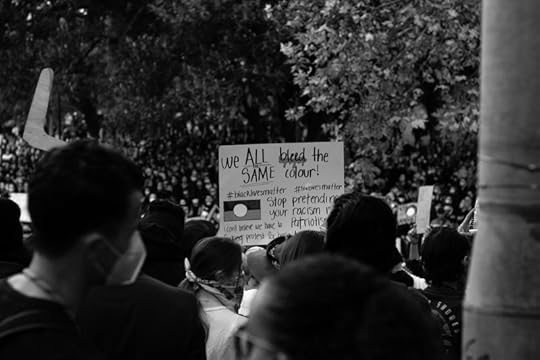 Photographer: Jacky Zeng | Source: Unsplash
Photographer: Jacky Zeng | Source: UnsplashThere is a Chinese phrase by Confucius: "Do not do to others what you don’t want to be done to you.” (This echoes the Golden Rule in the Bible: “Do unto others as you would have them do unto you” [Luke 6:31]). I wish that couple on the subway lived by these ideals.
It occurs to me that violence against Asians during COVID parallels the moral panic against homosexuals during the rise of AIDS in the 80s, where the hostility was irrational and unreasonable. No one was going to catch AIDS by standing next to a gay person but even so, the panic verged on hysteria.
There is no scientific association between Asian people and the COVID virus and it’s a flawed and irrational narrative to put the blame on Asians. Once COVID spread beyond China, everyone had the same likelihood to infect one another. If I could go back in time, I would tell the couple on the subway that they were more likely to be virus spreaders than me because they weren’t wearing masks and I was.
The only thing that anti-Asian sentiment does is to cause harm to individual Asian people like me. Hatred did not cure AIDS and it won’t cure COVID. We should all try to practice a bit more tolerance and kindness and for the couple on the subway, I would say, “Get your facts right before you open your mouth. You’re only embarrassing yourself.”
______
The Gen Z Corner is a new column with the Ruthless Compassion Institute written by Sharon Fung, which features compelling first-person narratives about mental health through a Gen Z lens. You can follow her blog here
Sharon Fung is a columnist for the Ruthless Compassion Institute based in Toronto, ON. With her bachelor’s in Equity studies and East Asian studies from University of Toronto, she focuses on cultural awareness, history, mental health, social issues, personal reflections, and how they intersect.
if(window.strchfSettings === undefined) window.strchfSettings = {};window.strchfSettings.stats = {url: "https://marciasirotamd.storychief.io/... "Hate is a Virus — The GenZ Corner",id: "84fb0907-fb13-4676-8158-d29510e9b589"};(function(d, s, id) {var js, sjs = d.getElementsByTagName(s)[0];if (d.getElementById(id)) {window.strchf.update(); return;}js = d.createElement(s); js.id = id;js.src = "https://d37oebn0w9ir6a.cloudfront.net... = true;sjs.parentNode.insertBefore(js, sjs);}(document, 'script', 'storychief-jssdk'))
The post Hate is a Virus — The GenZ Corner appeared first on Marcia Sirota.
January 12, 2023
Blue Monday: The Saddest Day of the Year
Monday, January 16th, is known around the world as “Blue Monday.” It’s supposed to be the saddest day of the year.
With the shape of things these days, I’m not surprised if people are feeling more down than ever.
In many ways, our world seems to be going in the wrong direction. We’re becoming increasingly polarized, paranoid and alienated.
 The world is in rough shape
The world is in rough shape Our climate crisis is worse than ever but corporations and governments are choosing to ignore or deny it, preferring the instant gratification of profit over the long-term protection of our planet.
Hackers are crashing hospital and airline systems, causing chaos and suffering. People are being attacked at random on the Toronto subway system. And Covid shows no sign of abating.
The mental health of young people is the worst it’s been in ages. Inflation is driving ordinary people to the food bank in droves. Hospitals are horrendously understaffed and more and more people can’t find a family doctor.
It’s time to bring the light
So, with all of this darkness upon us, how do we face Blue Monday 2023? We bring the light.
More than ever, this is the time to take action to make things better. You don’t have to fix every problem- just pick one thing that you want to work on and then go for it.
It can be as small as visiting an elderly neighbour or helping to shovel their snow. It can be as big as becoming a full-time social activist. Or anything in-between.
So much of what we call “the blues” comes from a sense of hopelessness and helplessness.
When we take concrete measures to improve our own lives and the lives of those around us, we feel more empowered and a lot less overwhelmed.
Another way to turn things around is to practice self-love. By this, I don’t mean self-indulgence.
Too often, we over-spend, overeat, drink alcohol to excess or gamble away our savings, believing that these activities will make us feel better. But they won’t. They’ll just cause us other problems.
It’s time for self-love
Self-love is listening to our feelings, tuning into our real needs, and making time for rest, play, and meaningful connections.
It’s letting go of perfectionism and practicing self-forgiveness. It’s silencing the toxic inner critic and practicing radical self-acceptance.
When we combine the practice of self-love with taking positive action to do some good or right some wrong, this is the secret formula for banishing the Blue Mondays.
And we don’t have to restrict these practices to January. We can do them all year round and become happier and healthier, improve our relationships and feel less stressed, while at the same time making the world a better place now and in the future.
if(window.strchfSettings === undefined) window.strchfSettings = {};window.strchfSettings.stats = {url: "https://marciasirotamd.storychief.io/... "Blue Monday: The Saddest Day of the Year",id: "84fb0907-fb13-4676-8158-d29510e9b589"};(function(d, s, id) {var js, sjs = d.getElementsByTagName(s)[0];if (d.getElementById(id)) {window.strchf.update(); return;}js = d.createElement(s); js.id = id;js.src = "https://d37oebn0w9ir6a.cloudfront.net... = true;sjs.parentNode.insertBefore(js, sjs);}(document, 'script', 'storychief-jssdk'))
The post Blue Monday: The Saddest Day of the Year appeared first on Marcia Sirota.
The Saddest Day of the Year
Monday, January 16th, is known around the world as “Blue Monday.” It’s supposed to be the saddest day of the year.
With the shape of things these days, I’m not surprised if people are feeling more down than ever.
In many ways, our world seems to be going in the wrong direction. We’re becoming increasingly polarized, paranoid and alienated.
 The world is in rough shape
The world is in rough shape Our climate crisis is worse than ever but corporations and governments are choosing to ignore or deny it, preferring the instant gratification of profit over the long-term protection of our planet.
Hackers are crashing hospital and airline systems, causing chaos and suffering. People are being attacked at random on the Toronto subway system. And Covid shows no sign of abating.
The mental health of young people is the worst it’s been in ages. Inflation is driving ordinary people to the food bank in droves. Hospitals are horrendously understaffed and more and more people can’t find a family doctor.
It’s time to bring the light
So, with all of this darkness upon us, how do we face Blue Monday 2023? We bring the light.
More than ever, this is the time to take action to make things better. You don’t have to fix every problem- just pick one thing that you want to work on and then go for it.
It can be as small as visiting an elderly neighbour or helping to shovel their snow. It can be as big as becoming a full-time social activist. Or anything in-between.
So much of what we call “the blues” comes from a sense of hopelessness and helplessness.
When we take concrete measures to improve our own lives and the lives of those around us, we feel more empowered and a lot less overwhelmed.
Another way to turn things around is to practice self-love. By this, I don’t mean self-indulgence.
Too often, we over-spend, overeat, drink alcohol to excess or gamble away our savings, believing that these activities will make us feel better. But they won’t. They’ll just cause us other problems.
It’s time for self-love
Self-love is listening to our feelings, tuning into our real needs, and making time for rest, play, and meaningful connections.
It’s letting go of perfectionism and practicing self-forgiveness. It’s silencing the toxic inner critic and practicing radical self-acceptance.
When we combine the practice of self-love with taking positive action to do some good or right some wrong, this is the secret formula for banishing the Blue Mondays.
And we don’t have to restrict these practices to January. We can do them all year round and become happier and healthier, improve our relationships and feel less stressed, while at the same time making the world a better place now and in the future.
if(window.strchfSettings === undefined) window.strchfSettings = {};window.strchfSettings.stats = {url: "https://marciasirotamd.storychief.io/... "The Saddest Day of the Year",id: "84fb0907-fb13-4676-8158-d29510e9b589"};(function(d, s, id) {var js, sjs = d.getElementsByTagName(s)[0];if (d.getElementById(id)) {window.strchf.update(); return;}js = d.createElement(s); js.id = id;js.src = "https://d37oebn0w9ir6a.cloudfront.net... = true;sjs.parentNode.insertBefore(js, sjs);}(document, 'script', 'storychief-jssdk'))
The post The Saddest Day of the Year appeared first on Marcia Sirota.
Marcia Sirota's Blog
- Marcia Sirota's profile
- 1 follower



